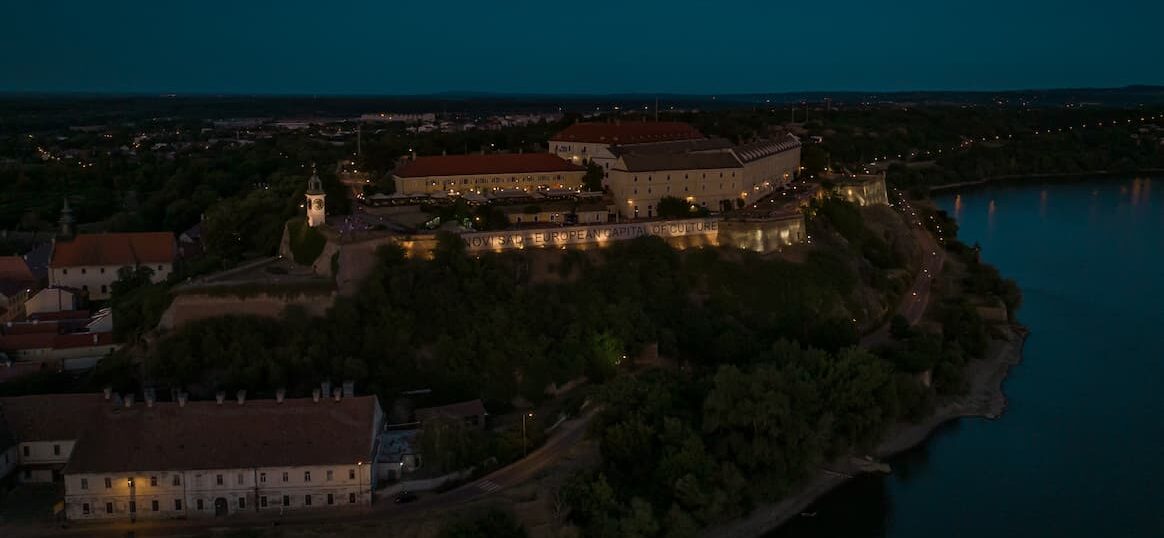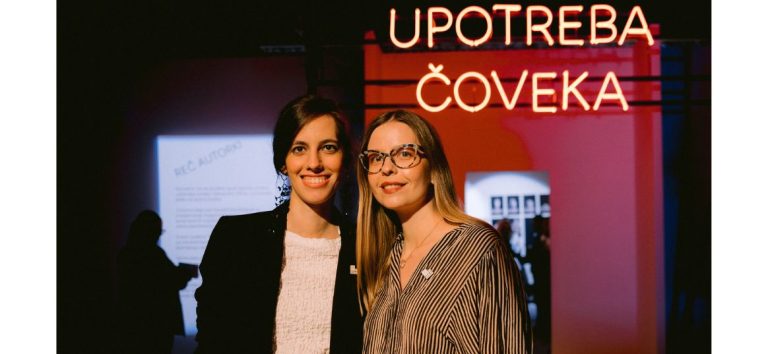The fact that art has entered every pore of the lives of the people of Novi Sad, that it has found its way to every corner of the city, and that artists and cultural institutions are more visible and accessible to everyone, is evidenced by the successful year of the prestigious title, which is behind us just in terms of a calendar. This great recognition, which Novi Sad received from all the cities of Serbia, will continue to live in the city of culture.
The ECoC title remains for the people of Novi Sad as a legacy, as a badge on the lapel that the city is proud of and by which it strategically positioned itself on the European artistic and tourist map. It was the title that paved the way for culture in the city to continue to develop and find innovative ways to reach all of us equally.
We are left with the awards and recognitions that came during the years of preparation for the European Capital of Culture, we are left with new spaces for culture throughout Novi Sad, such as cultural stations, we are left with renovated parts of the city that defy time with their newly highlighted beauty, we are left with the artistic practice of maintaining cultural events in unexpected places, we are left with the best European cultural trend brands that were founded in Novi Sad (Doček and Kaleidoscope of Culture), which will continue to attract and delight the audience in the coming years.
The quality of the cultural offer of the city with a rich heritage was recognized not only by numerous curious tourists who, throughout the year, closely followed the excellent programme in eight arches and as many as 4000 events, but also by reputable world media highlighting it on the European cultural map. The crown of the European Capital of Culture title was the numerous local and foreign artists who were part of the everyday life of the citizens and visitors of the city, the public who always supported quality art, partners who directly or indirectly participated in the title year, as well as workers in the field of culture who contributed that art, under the European spotlight, shine even more.
Some of them revealed to us their experience of Novi Sad as the European Capital of Culture, but also highlighted its multiple importance for the local cultural scene and fostering artistic practice.
‘I am sure that the vast majority of people are not aware of how important this is for the culture, identity and development of Novi Sad, but also for the whole of Serbia. In addition to projects of supreme quality, we are left with cutting edge technology that will be used by cultural institutions in the future, neighbourhoods have been renovated and much more. I love Novi Sad and I think it fully deserves this prestigious title from what I have seen so far” – explained Dušan Jovović, PhD, a multimedia artist whose current exhibition Time and Universe opened the title year.
The satisfaction that this title brings is also felt by the famous writer Rumena Bužarovska, whose literary encounter with the people of Novi Sad took place during the Migrations programme arch segment. Listen to her ECoC experience below.
Novi Sad has received a unique opportunity to set new standards on the city’s cultural and artistic scene, but also to strengthen international and regional ties, believes Bora Beljanski, the general manager of the Street Musicians Festival. Mileta Poštić, Novi Sad artist and professor at the Academy of Arts, agrees with him, and additionally emphasized that the importance of ECoC can change the professionalism towards the organization of the cultural scene, modernize it, improve it and make it diverse.
‘I hope it will encourage younger artists to dare to take more responsibility in their creative work. All in all, everything that is done for the sake of that system and event is a great experience and a great move’ – explained Poštić.
The director Kokan Mladenović strongly believes that the real capitals of culture do not become so for one year and that these are precisely the cities that know how to recognize the true values in culture, to support and develop them over years. We had the opportunity to enjoy his masterful Gulliver’s Travels, which was performed on the streets of Novi Sad, during The Future of Europe programme arch.
‘Novi Sad has all the potential for the quality content and its cultural offer to be worthy of the capital. I hope that this flattering title will leave behind many equipped spaces for cultural workers, the independent scene and cultural institutions, as well as that in ten years someone will be able to say that the new wave of Novi Sad culture began in the year when this city was the European capital of culture’ – believes Kokan Mladenović.
Novi Sad really has such potential, and the legendary Rambo Amadeus recognized that, and he is happy to return to it.
Novi Sad is always happy to visit the fantastic sevdalinka performer, the well-known singer Božo Vrećo, whom we listened to in March as part of the Migrations programme arch.
One of the most outstanding illustrators of today, Malika Favre, who met the artistic design scene of Novi Sad for the first time, held a lecture on illustration within the Kaleidoscope of Culture. That is when she met Novi Sad face to face for the first time and admitted that highlighting such ‘jewels of culture’ on the European map is extremely important.
Another artist who met Novi Sad for the first time thanks to ECoC, is the Japanese Akinori Oishi. He held several workshops for young people during The Future of Europe programme arch, and left a personal mark on Novi Sad. You have probably noticed his drawings of tiny, smiling characters that adorn the windows of certain shops, ECoC premises in the city centre and other buildings. Pay attention when you walk around the city. Akinori spent more than a month in Novi Sad and pointed out that he felt exceptional hospitality here, and he could feel the culture in the air.
‘I don’t feel different here, I feel like I’m at home. People are so kind, and I notice that the city is very focused on art, which makes me happy.’
The energy of a city that lives culture was also felt by one of our most famous actors of the younger generation, Andrija Kuzmanović, during his visit to the Kaleidoscope of Culture, which promotes the culture of togetherness.
‘Since 2009, when I conducted for the first time in Serbia, I have dived deep into the cultural and mental identity of this country, I have learned the language and always felt respect for Serbia. I visited Novi Sad several times and I conducted a concert in 2019, and what I can say is that the city is beautiful and has a really rich history.’
These are the words of the famous German conductor Gabriel Feltz, an artist we can only worship after masterfully conducting orchestras that played all nine of Beethoven’s symphonies in one day. Let us remind you that the final event and Beethoven’s ninth symphony gathered over 7 thousand classical fans at the Fortress.
One of our most outstanding classicists, a virtuoso on the violin, who became famous on the world stage as well, Stefan Milenković, emphasized the value of a diverse artistic programme that enriched the lives of the people of Novi Sad and the visitors during the title year.
According to his opinion, which he expressed in an interview for Visit Novi Sad, Milenković said that there is no city in the region that is more the capital of culture than Novi Sad. And the director of the Gallery of Matica Srpska, Tijana Palkovljević Bugarski, agrees with the statement.
‘Novi Sad has always had a rich artistic scene as a city with a large number of cultural institutions and festivals. The ECoC title contributed to the increase in the number of events, but more importantly, their quality. Steps were taken towards more innovative and interesting programmes that showed the European spirit and trends, and presented the city as a great art scene. The cultural identity of the city could be defined as a combination of tradition and innovation, classic values and contemporary concepts that create a vibrant artistic offer.’
In this important, historic year, Novi Sad was one big stage, culture was and remains a way of life for its citizens, and as Nemanja Milenković, CEO of the Novi Sad – European Capital of Culture Foundation says, solid foundations have been laid for its further development. Foundations that are strong and even now recognizable in Europe. Novi Sad is reported by the most important European media, and it is admired by a number of ECoC organizations and cities.
‘It is a great compliment and encouragement. However, if you ask me, the title was just the basis for us to get from the minus to the plus. If we don’t take advantage of it, this will just be ‘the circus is leaving the town’. The Strategy of Cultural Development of the City of Novi Sad until 2026 is the belief and hope that it should not and will not stop there. My subjective impression, taking into account the pandemic and the situation in Europe, is that we have made a miracle’ – concluded Nemanja Milenković.

Author: Marina Marić
Photo: Vladimir Veličković, Ervin Kovač, Jelena Ivanović, Marko Pudić








